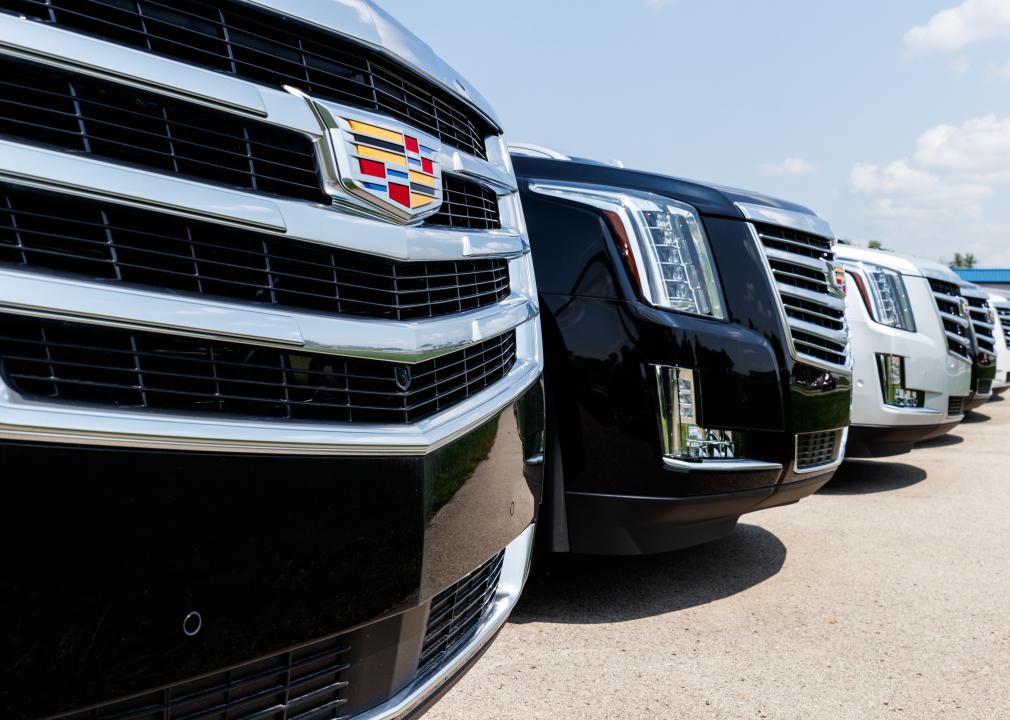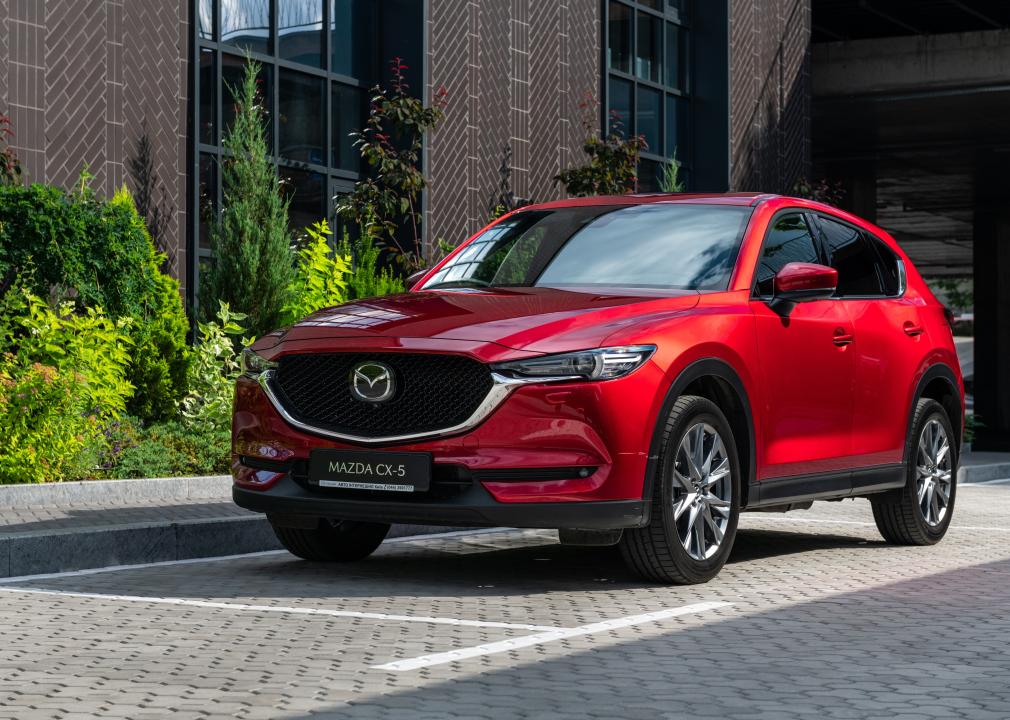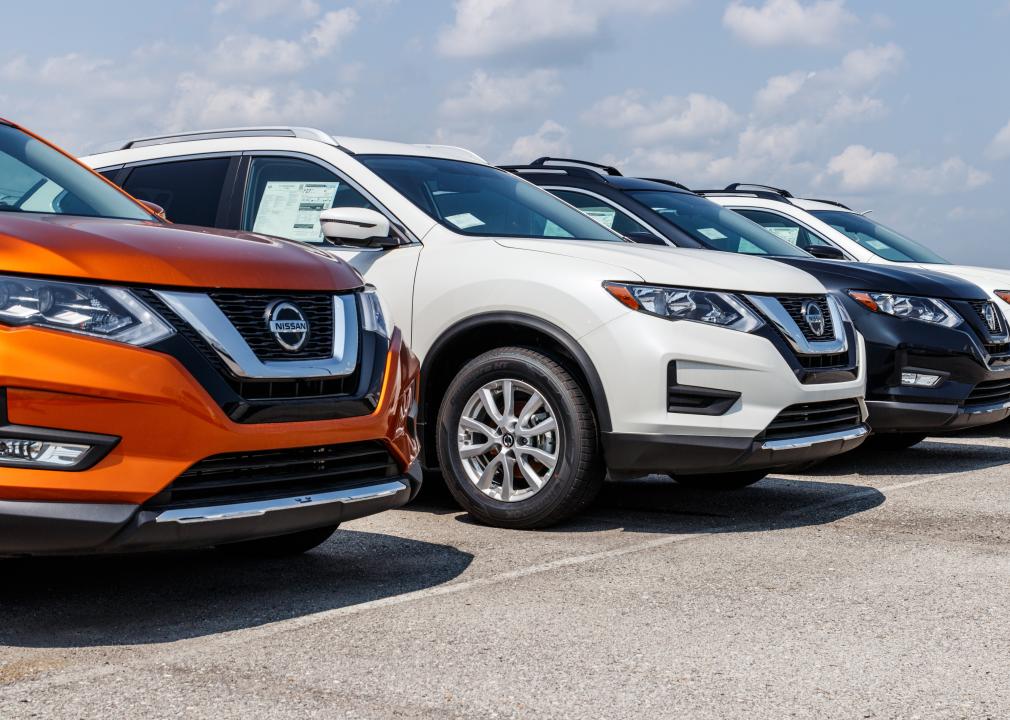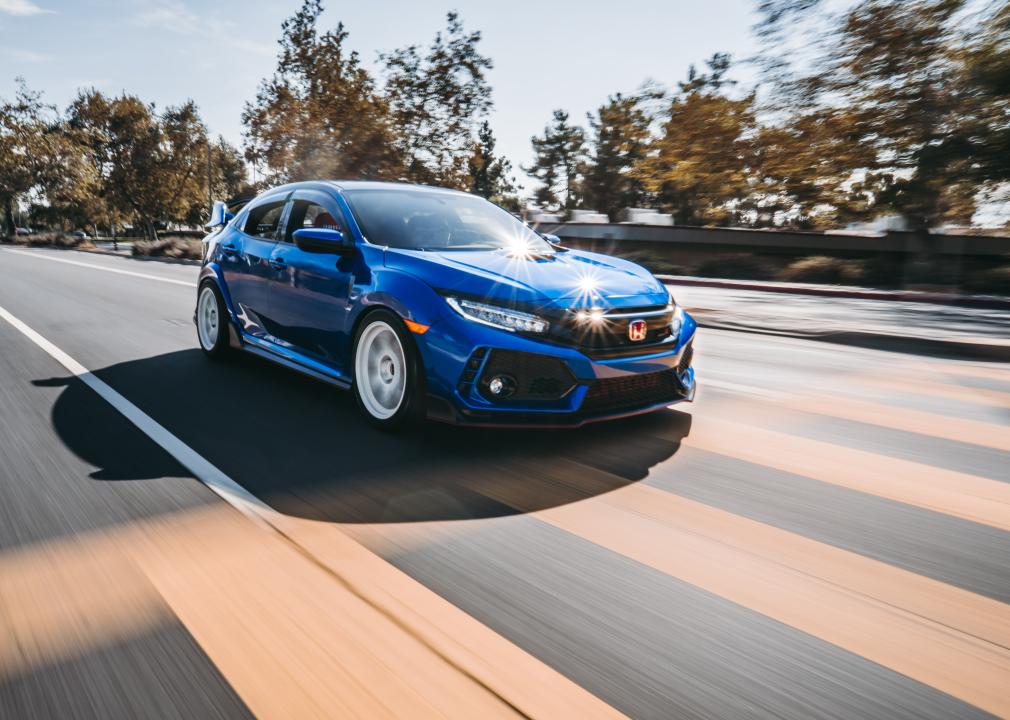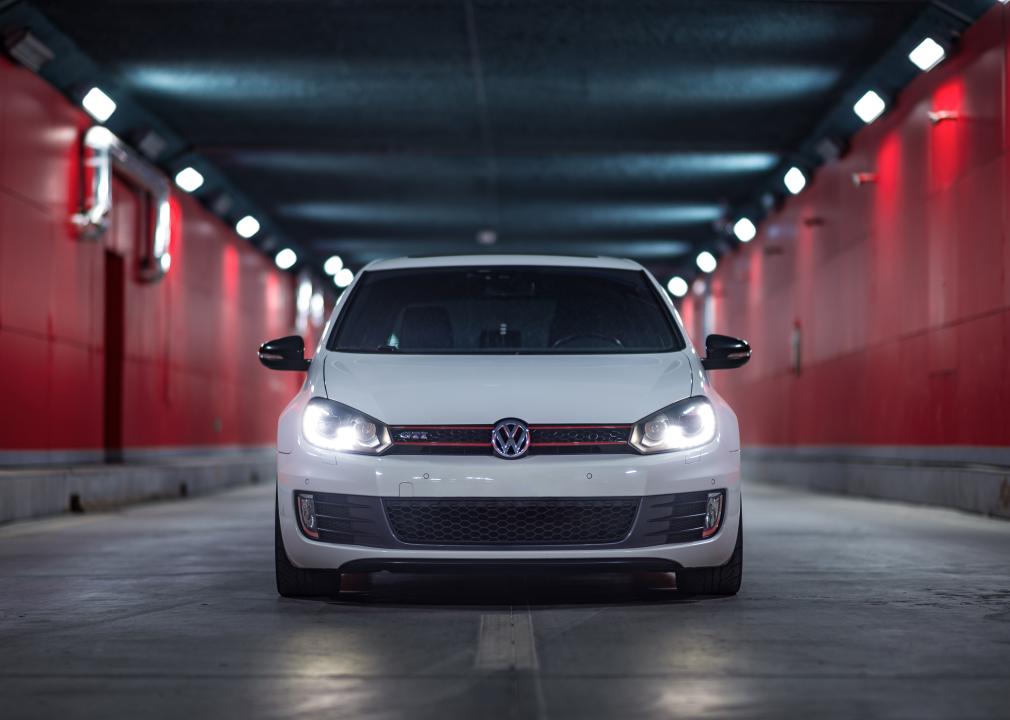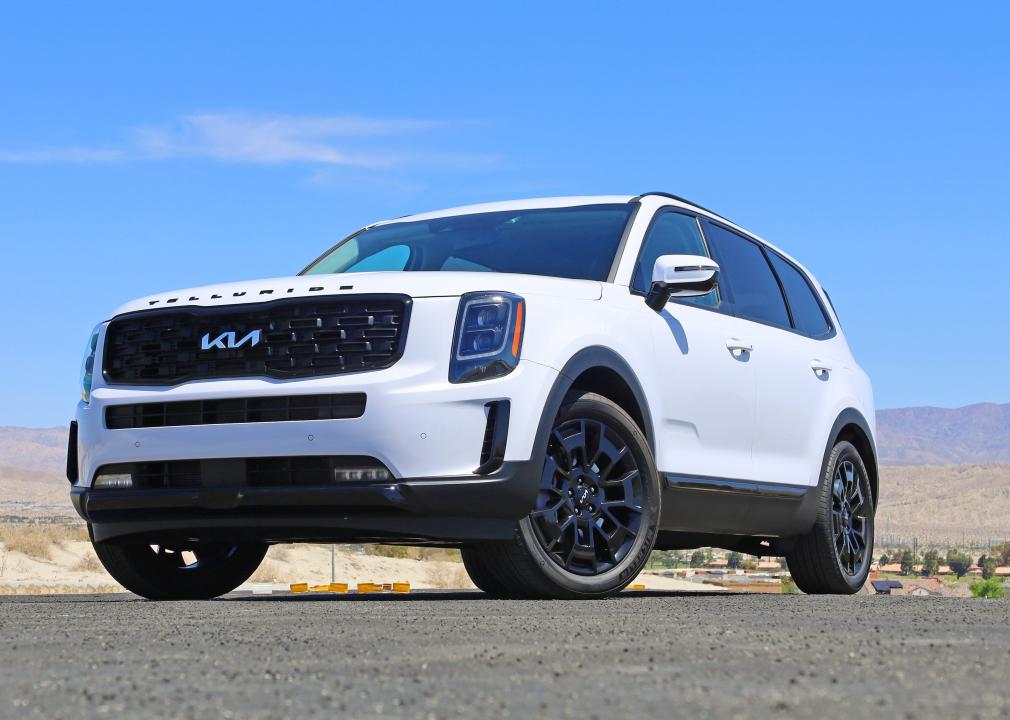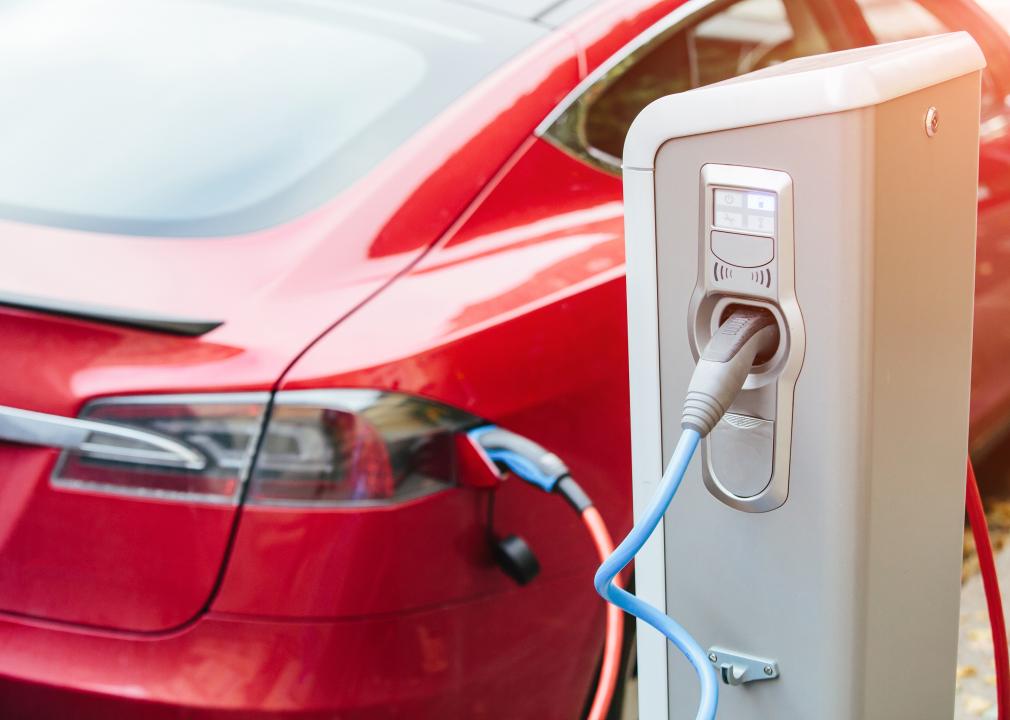Car manufacturers with the highest overall fuel economy in 2023
Pakpanat // Shutterstock
Car manufacturers with the highest overall fuel economy in 2023
Gray car at gas station being filled.
New vehicle CO2 emissions and fuel economy saw their most significant improvement in more than a decade in 2023, according to the Environmental Protection Agency’s 2023 Automotive Trends Report, released in December.
New vehicle CO2 emissions hit record lows while fuel economy reached record highs, the agency noted, with manufacturers putting efforts into improving emissions and fuel economy over the past five years. The General examined data from the EPA’s trends report to determine which car manufacturers had the highest overall fuel economy in 2023 and how that list has changed over time. Companies are ranked by the average real-world miles per gallon for all of the cars they produced last year. Also included is the amount of CO2 emissions per mile traveled. Data is preliminary and based on info provided by automakers.
Although the four largest classes of passenger vehicles in the U.S. have record-low emissions, the growing market demand for SUVs has counteracted some of the fleetwide benefits of lower emissions and higher fuel economy.
News of the record figures comes as the EPA, with the support of industry leaders, announced on March 20 that it finalized some of the most stringent standards for pollution from passenger cars, light-duty trucks, and medium-duty automobiles. The standards aim to cut back at least 7 billion tons of CO2 emissions and bring in approximately $100 billion in annual net benefits to society.
![]()
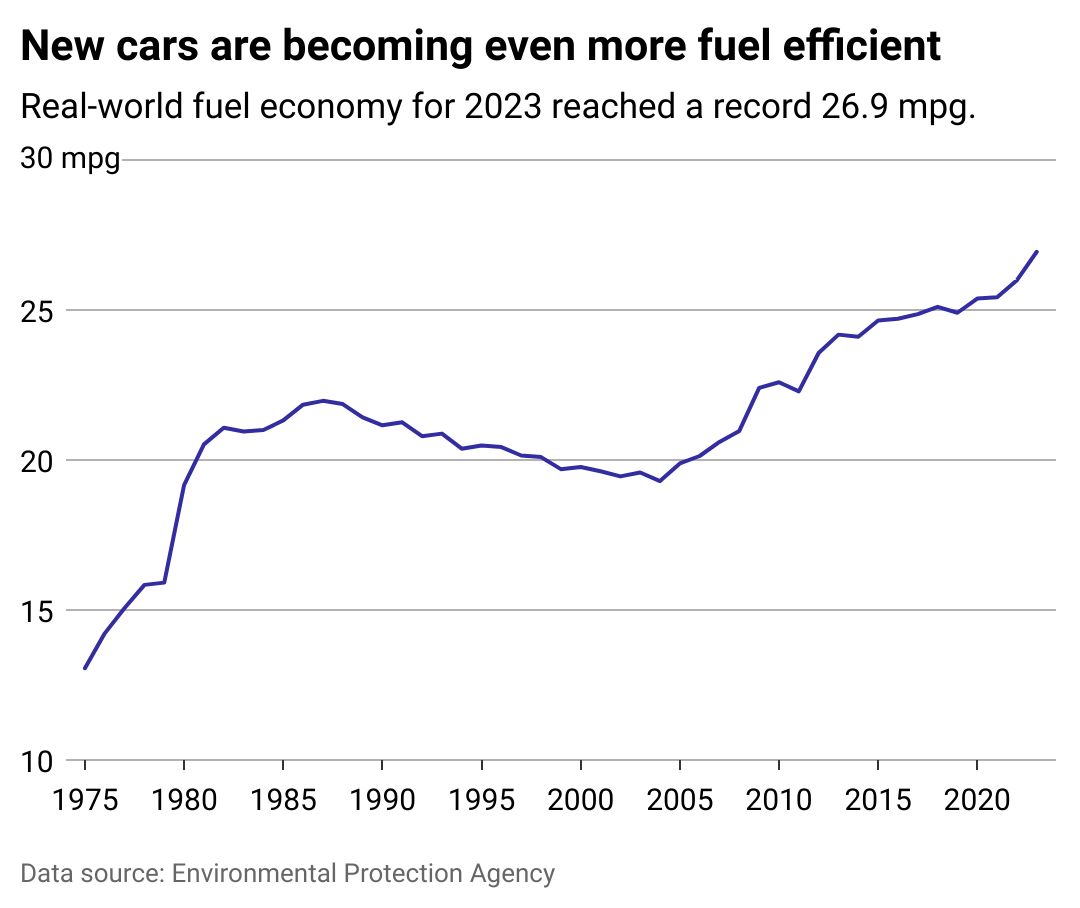
The General
The long road to better fuel economy
A line chart showing how new cars have become more fuel efficient since 1975. The real-world fuel economy for 2023 reached a record 26.9 miles per gallon.
In the 1950s, Californian researcher Arie Haagen-Smit established the link between automobile emissions and smoggy skies over Los Angeles. Since then, Congress has empowered the EPA—established by President Richard Nixon in 1970—to regulate emissions from automobiles and other moving sources of emissions through approaches such as incentivizing manufacturers to improve engine designs and develop fuels of higher quality.
The push toward more fuel-efficient vehicles began with the oil crisis of 1973 when the Organization of Arab Petroleum Exporting Countries imposed an embargo on the U.S. and many of its allies for their support of Israel. Until the embargo, fuel efficiency was not a key selling point for automobile buyers: In the ’70s, most vehicles boasted just 12 miles to the gallon.
In 1975, Congress passed the Energy Policy and Conservation Act, putting into place the Corporate Average Fuel Economy standards that called for new passenger vehicles to have a fuel economy of 27.5 mpg by 1985. The CAFE standards and regulatory policymaking by the EPA contributed to the rise in fuel efficiency through the ’70s. From the late 1990s to the early 2000s, demand for SUVs gained momentum. With bigger vehicles came higher fuel consumption and lower fuel economy. In 2007, Congress passed the Energy Independence and Security Act, raising the target efficiency for new vehicles to 35 mpg by 2020.
Growing environmental concerns and local, federal, and state governments’ incentives have motivated consumers to gradually shift to electric vehicles, which have contributed to massive efficiency gains in recent years. Electric cars have higher fuel efficiency than their gas-powered counterparts, at 60-73% efficiency.
Keep reading to see which car manufacturers had the highest overall fuel economy in 2023, ranked in ascending order to the #1 fuel economy.
Jonathan Weiss // Shutterstock
#14. Stellantis
Jeep Wrangler on display at a Chrysler Jeep dealership.
– Real-world fuel economy: 22 miles per gallon
— 19 city mpg
— 24.9 highway mpg
– Real-world CO2 emissions: 397 grams per mile
Jonathan Weiss // Shutterstock
#13. GM
A close up of logo on car at a Cadillac dealership.
– Real-world fuel economy: 22.2 miles per gallon
— 19.6 city mpg
— 24.8 highway mpg
– Real-world CO2 emissions: 399.3 grams per mile
jon lyall // Shutterstock
#12. Ford
Ford logo on front of a car.
– Real-world fuel economy: 23.1 miles per gallon
— 20.5 city mpg
— 25.4 highway mpg
– Real-world CO2 emissions: 376.4 grams per mile
NothingIsEverything // Shutterstock
#11. BMW
Close up of a BMW emblem on a car with sunset-filled sky.
– Real-world fuel economy: 27.4 miles per gallon
— 23.9 city mpg
— 30.9 highway mpg
– Real-world CO2 emissions: 310.4 grams per mile
Anton_AV // Shutterstock
#10. Mazda
Mazda CX-5 parked in a business district.
– Real-world fuel economy: 27.5 miles per gallon
— 24.2 city mpg
— 30.6 highway mpg
– Real-world CO2 emissions: 322.9 grams per mile
Jonathan Weiss // Shutterstock
#9. Nissan
New vehicles parked at a Nissan car and SUV dealership.
– Real-world fuel economy: 27.8 miles per gallon
— 24.3 city mpg
— 31.3 highway mpg
– Real-world CO2 emissions: 314.2 grams per mile
Ivan Kurmyshov // Shutterstock
#8. Mercedes
Front view of a Mercedes-Benz C63 driving.
– Real-world fuel economy: 28 miles per gallon
— 24.2 city mpg
— 31.7 highway mpg
– Real-world CO2 emissions: 297.6 grams per mile
Valdis Skudre // Shutterstock
#7. Subaru
Subaru Forester e-Boxer outdoors on a dirt road surrounded by tall trees.
– Real-world fuel economy: 28 miles per gallon
— 24.7 city mpg
— 31.1 highway mpg
– Real-world CO2 emissions: 315.6 grams per mile
Streetmetal // Shutterstock
#6. Toyota
White Toyota Revo Rocco on the road with mountains in the background.
– Real-world fuel economy: 28.2 miles per gallon
— 25.6 city mpg
— 30.5 highway mpg
– Real-world CO2 emissions: 313.8 grams per mile
PaulLP // Shutterstock
#5. Honda
Honda Type-R driving on a sunny day.
– Real-world fuel economy: 28.7 miles per gallon
— 25.8 city mpg
— 31.4 highway mpg
– Real-world CO2 emissions: 309.6 grams per mile
yousang // Shutterstock
#4. VW
Volkswagen Golf GTI MK6 driving through a tunnel.
– Real-world fuel economy: 28.9 miles per gallon
— 25.3 city mpg
— 32.4 highway mpg
– Real-world CO2 emissions: 291.9 grams per mile
meowKa // Shutterstock
#3. Hyundai
Hyundai cars parked in a row at a dealership.
– Real-world fuel economy: 29.1 miles per gallon
— 26 city mpg
— 32 highway mpg
– Real-world CO2 emissions: 299.6 grams per mile
Luxury Fred Sherman // Shutterstock
#2. Kia
A Kia Telluride SX V6 RWD stopped on a road with a blue sky behind it.
– Real-world fuel economy: 29.7 miles per gallon
— 26.5 city mpg
— 32.7 highway mpg
– Real-world CO2 emissions: 293.3 grams per mile
Scharfsinn // Shutterstock
#1. Tesla
A Tesla car charging at station.
– Real-world fuel economy: 120.7 miles per gallon
— 126.7 city mpg
— 116.5 highway mpg
– Real-world CO2 emissions: 0 grams per mile
Story editing by Nicole Caldwell. Copy editing by Kristen Wegrzyn. Photo selection by Clarese Moller.
This story originally appeared on The General and was produced and
distributed in partnership with Stacker Studio.


